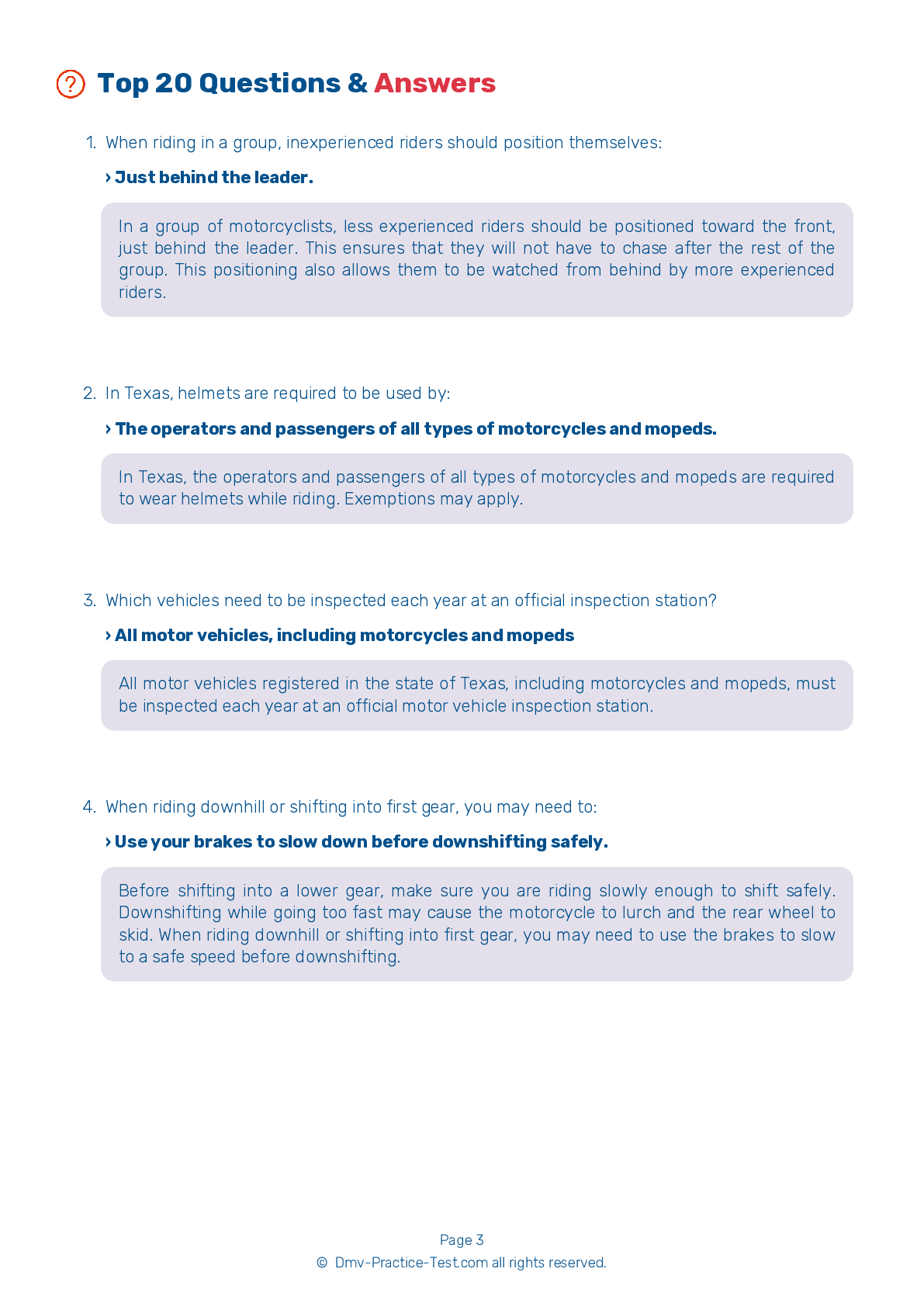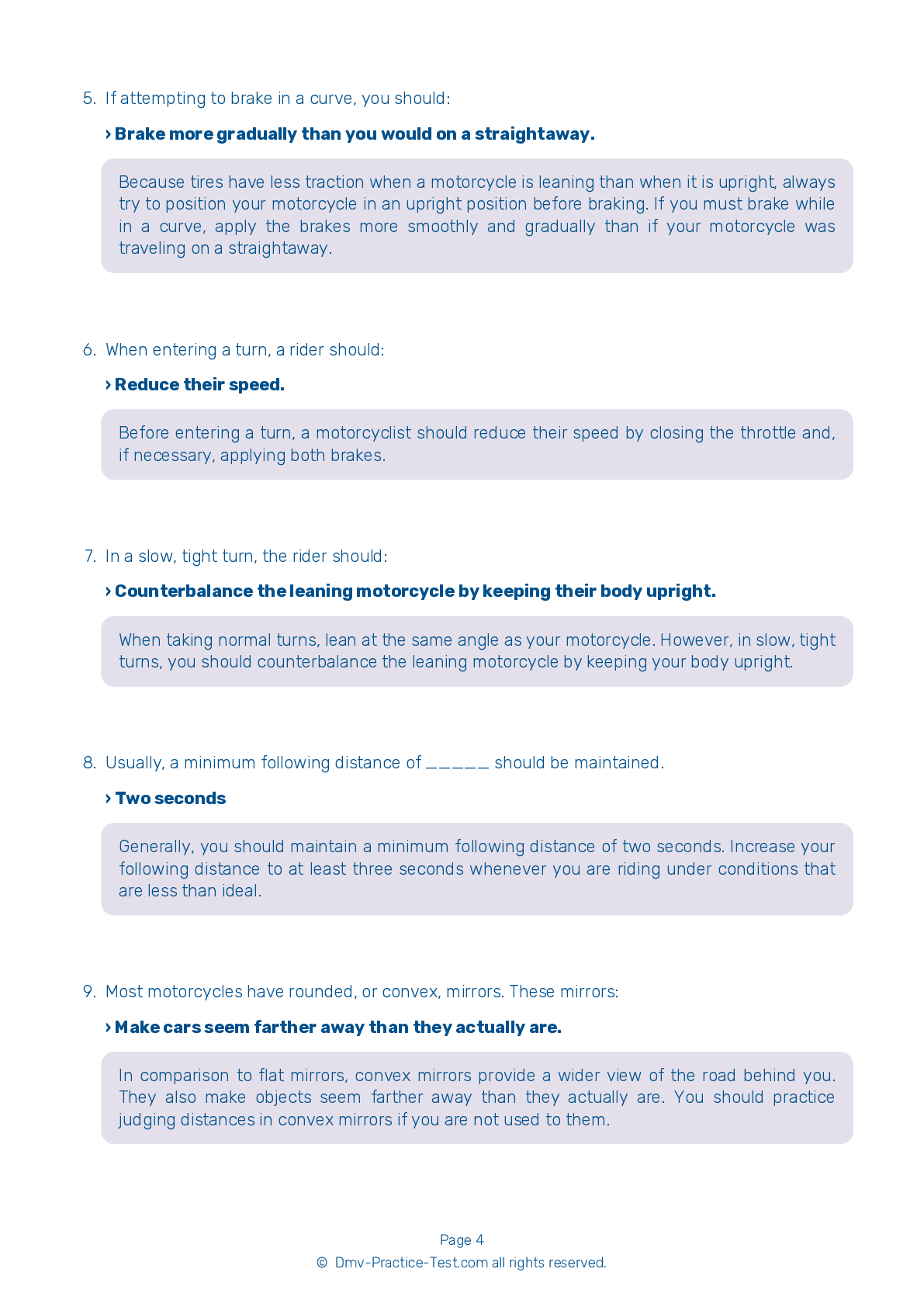Motorcycle Test | License TX 2024 | FREE Online Practice!
Take this FREE motorcycle test (license in TX 2021) to check your knowledge of the road rules. To improve your results, download a motorcycle handbook online, study theory, and practice for free on our website. Still worried about how to get a motorcycle license in Texas in 2021? Check our website for more sample tests, train as much as possible, and boost your grades!
1 . What could happen if a motorcyclist takes a turn too fast?
Riders often try to take curves or turns too fast. When they can’t hold the turn, they end up crossing into another lane of traffic or going off the road. Riders also often overreact and brake too hard, causing a skid and loss of control.
2 . The front brake supplies how much of a motorcycle's potential stopping power?
The front brake of a motorcycle is more powerful than the rear brake and can provide at least 70 percent of the motorcycle's total stopping power.
3 . A skidding rear tire:
A skidding rear tire is a dangerous condition that can result in a violent crash and serious injury or death. Too much rear brake pressure can cause the rear wheel to lock. As soon as the rear wheel locks, your ability to change direction is lost. To regain control, the brake must be released.
4 . In a slow, tight turn, the rider should:
When taking normal turns, lean at the same angle as your motorcycle. However, in slow, tight turns, you should counterbalance the leaning motorcycle by keeping your body upright.
5 . You will ______ hear a tire going flat.
Motorcycle riders will rarely actually hear a tire going flat. Tire failure is more often indicated by a change in how the motorcycle handles.
See the exact questions that will be on the 2024 Texas DMV exam.
99.2% of people who use the cheat sheet pass the FIRST TIME
Jeneen was tired of paying $5/gallon. She got herself a scooter that required the motorcycle license. She studyed the motorcycle test cheat sheet and passed her test the next day!
Christopher tells us how he knew nothing prior to obtaining the motorcycle study guide, and he only got one question wrong because he clicked on the wrong answer by mistake.



